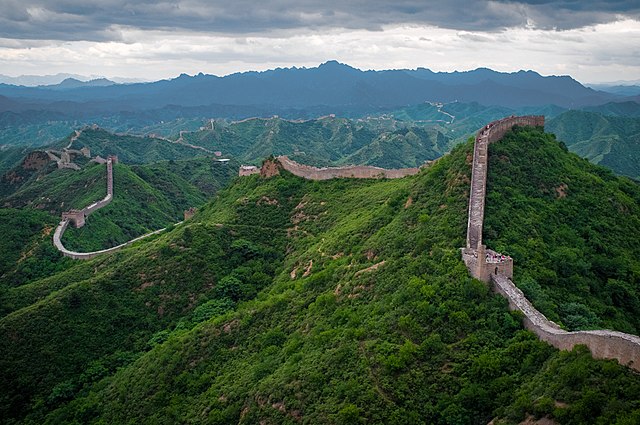Great Wall of China Facts
Below are some of the facts about Great Wall of China:
- In terms of ancient architecture, the Great Wall of China is the biggest in the world, and also it is the longest wall ever made.
- The wall is locally called Changcheng in China, which literally means long wall.
- Officially the length of the Great Wall is 21,196.18 km or 13,170.7 miles
- Most of the Great Wall that we see today, with a total length of 8,851 km, are relics of the Ming Dynasty.
- The age of the Great Wall is over 2,300 years.
- The 9 municipalities and provinces through which the Ming Dynasty Great Wall passes are, Hebei, Liaoning, Beijing, Tianjin, Shanxi, Inner Mongolia, Ningxia, Shaanxi, and Gansu.
- The segment of the wall getting the maximum tourists and visitors is Badaling. It received a record number of 63 million visitors in 2001. Normally the peak time to visit the wall here is the first weeks of May and October. During this time the count of tourists may reach up to 70000 each day.
- Height of the Great Wall at Juyong Pass and Badaling is 7.88 meters in average, and the point which is highest is 14 meters.
- Through the years almost a third of the Great Wall has deteriorated and gone, and now there are no traces of the structure at those parts.
- The Ming Dynasty lost its power in 1644, and after that no work or renovation was done on the Great Wall. Only some parts have been renovated for tourism.
- The work of renovation and restoration of the Great Wall was initiated in 1957 from the section in Badaling.
- The Great Wall got enlisted as a World Heritage site by UNESCO in December of 1987.
- There is a saying that the Great Wall of China is the only visible man made architecture on Earth which is visible from the space. The truth is, it is not. The Great Wall is not visible to the unaided eye in low Earth orbit, according to Chinese astronaut Yang Liwei, and certainly not visible from the moon.
- The line of the Great Wall is not continuous. It gets interrupted by parallel walls, side walls, circular walls and so on at places, and some places have no wall at all.
- In the time of the Qin Dynasty the use of glutinous rice flour was done to join the wall bricks for more structural strength and bonding.
- The workers used for the construction of the Great Wall were war prisoners, convicts, soldiers, and forcefully captivated farmers.
- The Great Wall construction was not started by the first ruler of Qin Dynasty. Rather he just linked the walls at Northern part which he has conquered.
- There are bullet holes at the Gubeikou Section of the wall. These bullets are from the battles that took place during the Second Sino-Japanese War.
- Bricks from the Great Wall were used in making residential building, farms, and reservoirs during the Cultural Revolution in 1966 to 1976.
- The picture of the Great Wall in most tourist books and images is of the attractive part of the Jiankou Section which looks the most picturesque.
- One of the most famous legends about the Great Wall is about Meng Jiangnv, who was the wife of a construction worker of the wall. Her husband died while making the wall and she wept so much that her wails made a certain portion of the wall to collapse and reveal the bones of her husband. She had then buried those bones.
